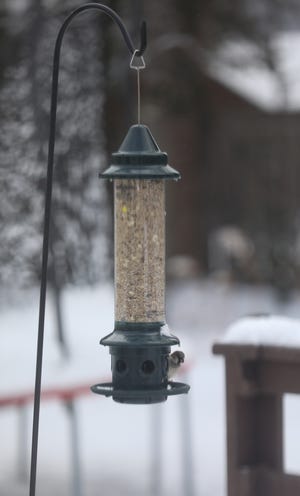In Arkansas, the rare snow spawned bird watchers and raised questions about its effects on insects.
Dr. Ragupathy Kannan, an ornithologist at the University of Arkansas-Fort Smith, noted that the number of birds coming to birdhouses has increased.
When it snows, birds cannot find their natural sources of food so easily, so they turn to bird feeders for lighter sources of food.
According to Kannan, juncos are among the most popular birds to appear in the snow.
“Juncos are sometimes called snowbirds because they appear when it first snows.” said Kannan.
Kannan also pointed out that Juncos, American Robins, Northern Cardinals, Carolina Chickadees, and Tufted Titmice enjoy black oil sunflower seeds. These birds are native to Arkansas and are seen by bird watchers in the River Valley.
“These sunflower seeds are full of fats and carbohydrates that keep the birds warm, and Blue Jays are always drawn to shelled peanuts – unsalted please!” said Kannan.
Other birds, including owls, come out in the snow. Owls fly around even during the day, according to Kannan, and are most commonly seen in open fields, such as those found in Charleston and Fort Chaffee.
Beetle in the snow
Insects, on the other hand, benefit from snow. According to professors from Washington State University and the University of Idaho in a 2019 article, large amounts of snow cause the ground to become insulated and not freeze as deep as it would without snow.
Since February is still in the hibernation cycle for insects, the impact on them is small, although this is an unexpected blizzard with the highest amount of snow in several years.
According to Ryan Pankau of the University of Illinois, insects bury their larvae deep enough to avoid freezing the soil. Because Arkansas has mild winters, insects usually bury their larvae deeper than in places where snow falls regularly, where the ground doesn’t freeze as deeply.
Nature adapts to the climate and this strange winter storm had the potential to damage the life cycle of several different animals. This snowfall was the opposite of dangerous for insect life










